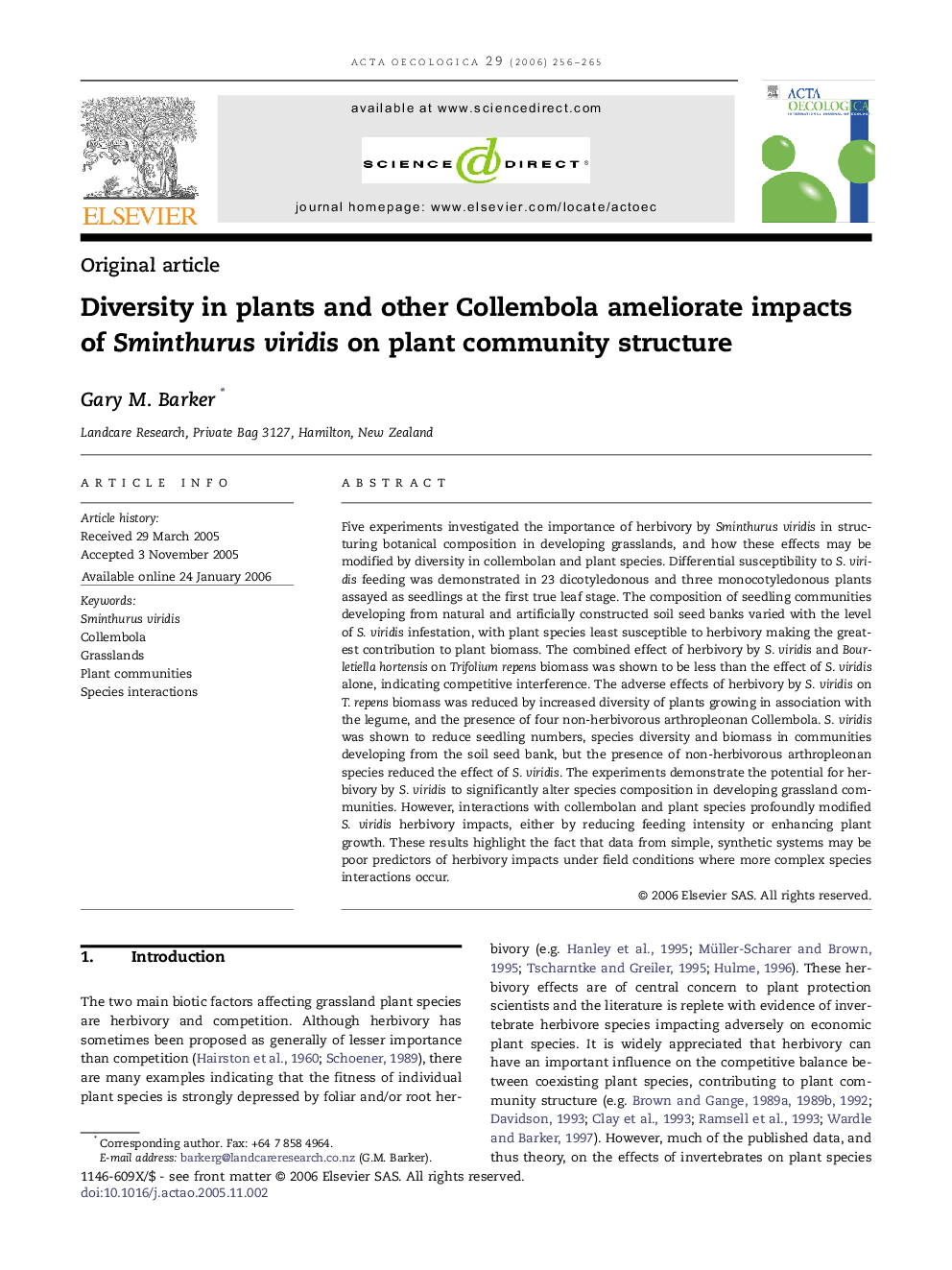| Article ID | Journal | Published Year | Pages | File Type |
|---|---|---|---|---|
| 4381747 | Acta Oecologica | 2006 | 10 Pages |
Five experiments investigated the importance of herbivory by Sminthurus viridis in structuring botanical composition in developing grasslands, and how these effects may be modified by diversity in collembolan and plant species. Differential susceptibility to S. viridis feeding was demonstrated in 23 dicotyledonous and three monocotyledonous plants assayed as seedlings at the first true leaf stage. The composition of seedling communities developing from natural and artificially constructed soil seed banks varied with the level of S. viridis infestation, with plant species least susceptible to herbivory making the greatest contribution to plant biomass. The combined effect of herbivory by S. viridis and Bourletiella hortensis on Trifolium repens biomass was shown to be less than the effect of S. viridis alone, indicating competitive interference. The adverse effects of herbivory by S. viridis on T. repens biomass was reduced by increased diversity of plants growing in association with the legume, and the presence of four non-herbivorous arthropleonan Collembola. S. viridis was shown to reduce seedling numbers, species diversity and biomass in communities developing from the soil seed bank, but the presence of non-herbivorous arthropleonan species reduced the effect of S. viridis. The experiments demonstrate the potential for herbivory by S. viridis to significantly alter species composition in developing grassland communities. However, interactions with collembolan and plant species profoundly modified S. viridis herbivory impacts, either by reducing feeding intensity or enhancing plant growth. These results highlight the fact that data from simple, synthetic systems may be poor predictors of herbivory impacts under field conditions where more complex species interactions occur.
